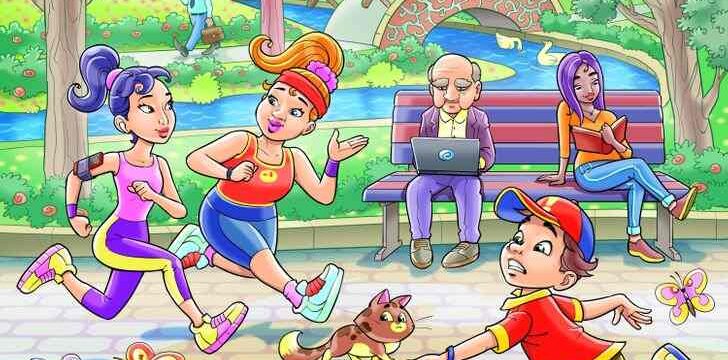
In today’s world, appearances can be deceiving. Sometimes, what we see on the surface doesn’t tell the whole story—and that’s especially true when it comes to money, happiness, and how we define wealth. A simple image is making waves online for challenging how people view poverty. It shows three different families, each sitting around a dining table, and asks a powerful question: Which family is poor?
At first glance, it looks like a straightforward puzzle. But as you take a closer look, you’ll quickly realize it’s much deeper than just spotting worn-out clothes or a broken chair. This isn’t just a logic challenge—it’s a mirror that reflects your values, your biases, and your definition of what it means to live a “rich” life.
Let’s break it down and explore what this image really teaches us.
The Visual: Three Families, Three Realities
The illustration features three different households:
-
Family A appears to be sitting in a very modest setting. The walls are plain, the furniture is basic, and there’s no fancy decoration. But the family is together, smiling, and clearly enjoying each other’s company.
-
Family B has a more stylish dining area with decorations, polished furniture, and a sleek modern vibe. But the members at the table seem distant. One’s on their phone. Another is staring off, uninterested. The warmth is missing.
-
Family C lives in what looks like a luxurious setting. The room is elegant, the food looks gourmet, and the parents are dressed fashionably. Yet their children appear ignored, and the atmosphere feels cold and disconnected.
So the big question is: Who’s really poor?
A Matter of Perception, Not Possessions
Most people would instinctively label the first family as poor. After all, they lack material comforts. But take a step back—what does poor really mean?
If we define wealth purely by physical items—money, gadgets, clothing—then yes, Family A might fit the bill. But if we define richness in terms of emotional health, connection, and love, the answer changes drastically.
Family A, though materially modest, is emotionally rich. They communicate. They laugh. They are clearly present with each other.
Family B, despite being more well-off, shows signs of emotional poverty. Everyone is glued to a screen, and the human connection is missing.
Family C, with all their external wealth, seems the most emotionally disconnected of all. The luxury setting cannot hide the lack of presence, care, and attention between family members.
Emotional Wealth vs. Material Wealth
This visual puzzle is a subtle but profound test. It pushes us to consider what real poverty looks like.
-
Emotional Poverty is when a family is physically present but emotionally absent. It’s when people live under the same roof but act like strangers.
-
Material Poverty is the lack of physical resources like money, clothing, or a fancy home.
What this test does brilliantly is highlight how you can have everything and still feel empty, and how you can have very little and still feel fulfilled.
The Real Lesson: What Does “Poor” Mean to You?
The beauty of this visual isn’t in “getting the right answer.” It’s about self-reflection. It challenges you to examine your own beliefs:
-
Do you equate money with success?
-
Do you believe love and connection are more valuable than possessions?
-
Are you unconsciously judging others based on appearance?
Your choice reveals more about your values than the families in the photo.
And that’s the point.
Why This Puzzle Has Gone Viral
It’s more than a brain teaser—it’s a social commentary. In an age where people are constantly comparing themselves to filtered Instagram lives and TikTok trends, this image reminds us of what truly matters.
People are hungry for deeper meaning, for authenticity, and for real human connection. That’s why this seemingly simple image has struck a chord with millions.
Final Thoughts: Redefining What It Means to Be “Rich”
In the end, the “poorest” family might be the one with the most money but the least connection. And the “richest” might be the one with a chipped table, but a heart full of love.
This image teaches a timeless truth: You can’t measure happiness with a bank account.
So next time you walk into a home—whether it’s yours or someone else’s—don’t just look at the furniture or the size of the TV. Look at the eyes of the people around the table. Are they talking? Laughing? Listening?
If so, you’ve just stepped into a very, very wealthy home.





